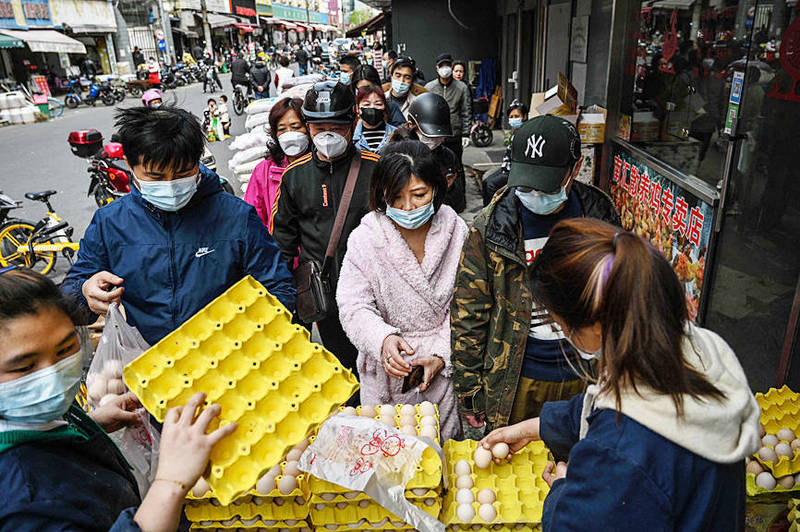《TAIPEI TIMES》 Half of Shanghai locked down

A transit officer, wearing protective gear, yesterday controls access to a tunnel in the direction of Shanghai’s Pudong District, which is in lockdown to prevent the spread of COVID-19. Photo: AFP
‘FIGHT FOR FOOD’: People not in lockdown are lining up at grocery stores, while ‘those who are sit up all night trying to order food on apps,’ a resident wrote online
/ AFP, SHANGHAI
Millions of people in Shanghai were yesterday confined to their homes as the eastern half of China’s financial hub went into lockdown to curb the country’s biggest ongoing COVID-19 outbreak.
The move, announced late on Sunday, caused a run on grocery stores by residents who have become exasperated with authorities’ inability to snuff out the outbreak despite nearly three weeks of increasingly disruptive measures.
Authorities are imposing a two-phase lockdown of the city of about 25 million people to carry out mass testing.
The government had sought to avoid the hard lockdowns regularly deployed in other Chinese cities, opting instead for rolling localized lockdowns to keep Shanghai’s economy running.
However, the city has in the past few weeks become China’s COVID-19 hot spot, and yesterday reported another record high, with 3,500 new confirmed cases.
The area locked down yesterday is the sprawling eastern district known as Pudong, which includes the main international airport and glittering financial center.
The lockdown is to last until Friday, then switch to the more populated western Puxi section, home to the historic Bund riverfront.
The government said the steps were intended to root out infections “as soon as possible.”
The unpredictable neighborhood-level measures employed in the past few weeks have left many citizens frustrated with repeated brief confinements at home.
Some complained that only several hours’ notice was given for the new, larger lockdown.
“We really don’t understand Shanghai’s management and control measures. There has indeed been some inconsistency,” said a 59-year-old man who gave only his surname Cao as he lined up to buy groceries.
“After so much time, [the city] is not controlling the virus and the numbers are still going up,” he added.
China largely kept the virus under control for the past two years through strict zero-tolerance measures including mass lockdowns of cities and provinces for even small numbers of cases.
The Omicron variant of SARS-CoV-2 has proven harder to stamp out.
China has reported several thousand new daily cases for the past two weeks. Those numbers remain insignificant globally, but are up sharply from fewer than 100 per day last month.
Tens of millions of residents in affected areas across China have been subjected to citywide lockdowns in response, but as Shanghai has struggled, some cities have made progress.
The southern tech manufacturing hub Shenzhen — which locked down earlier in the current outbreak — announced that normal business activity was resuming as new cases have fallen.
One Shanghai resident wrote on the popular Sina Weibo microblog of being in and out of neighborhood lockdowns several times recently.
“Now even peoples’ basic livelihood has become a problem. Those who aren’t locked down fight for food, and those who are sit up all night trying to order food on apps,” the post said.
Some posts complained of the effect on older residents who might not know how to order online, while others accused Shanghai — which is envied by other cities for its wealth and cosmopolitan image — of putting its desire to maintain normality over health concerns.
Chinese authorities have watched nervously as a deadly Hong Kong Omicron surge sparked panic buying and claimed a high toll of unvaccinated older residents before later surging in mainland China.
新聞來源:TAIPEI TIMES




















